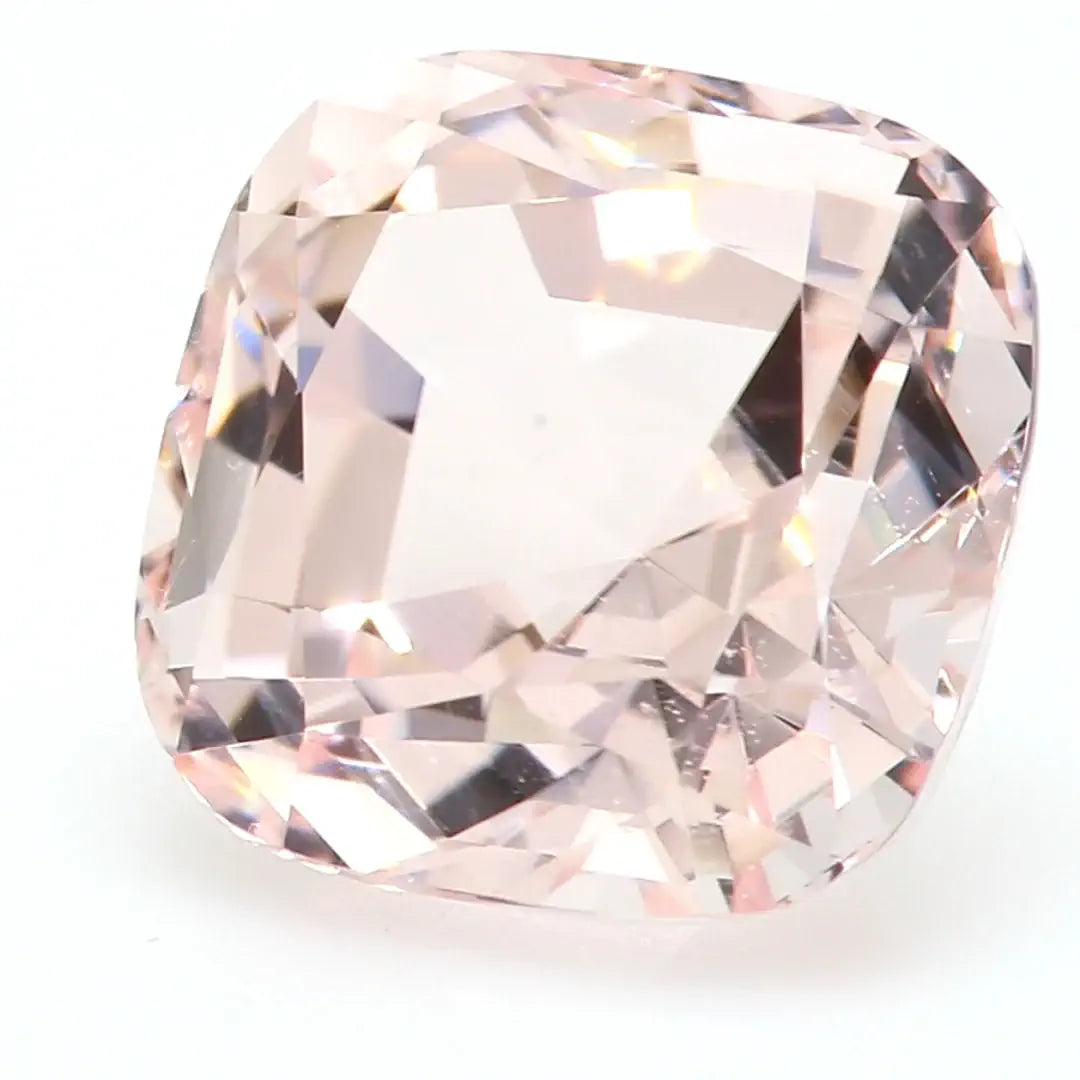ENCYCLOPEDIA
Morganite Full Guide

Morganite is a soft pink to peach gemstone from the beryl family, the same mineral group as emerald and aquamarine. Loved for its delicate color and romantic appeal, morganite symbolizes compassion, emotional healing, and unconditional love. Its gentle brilliance and feminine tones make it a meaningful choice for both everyday jewelry and engagement pieces. While not tied to a specific month, morganite has become a modern favorite for personalized, heartfelt gifting.
Characteristics of the Morganite
Etymology: The name "morganite" honors financier J.P. Morgan, who was a major patron of the mineral's discoverer, George Frederick Kunz.
Family: Beryl
Chemical Composition: Beryllium aluminum silicate, with manganese providing its distinctive pink to peach hues.
Hardness: 7.5 - 8 on the Mohs scale
Density: 2.66 - 2.70
Optical Properties: Pleochroism, showing different shades depending on the angle of light.
Refractive Index: 1.577 to 1.583
Birefringence: 0.005
Crystal System: Hexagonal

The origin of Morganites
Morganites are primarily found in several notable locations around the world. Key origins include:
- Brazil
- Madagascar
- Mozambique
- Namibia
- Afghanistan
- Russia
Carat
The carat is the standard unit of measurement for the weight of gemstones. One carat is equal to 200 milligrams, or 0.2 gram.
Like the aquamarine and the emerald, who are both from the beryl family, the morganite has a lower density. As such, compared to a diamond of the same carat weight, a morganite will be larger.
The color of the Morganite
Morganites are favored among jewelry aficionados for its soft and delicate colors, ranging from pastel pink and vibrant pink to orange-pink, often compared to peach or salmon for its darker shades.
Stones with a higher content of the manganese will have stronger shades of orange. But morganites with high level of color saturation are rare, making them very valuable.
Due to the stone's pleochroism, meaning that the shade will depend on the direction of the light, the color of the faceted gemstone will be dependent on the general direction of the rough material when it is cut.
Discover our Guide on the Colors of Gemstones.


The clarity of Morganites
Morganites are naturally eye-clean, meaning they have no inclusions visible to the naked eye. On top of that, most morganites are transparent, allowing for the light to pass through and interact with the stone beautifully.
Under a 10x loupe or microscope, the morganite can however display bubbles or tubes and in rare cases feathers.
Cut & Shapes
Due to its lack of major inclusions, and its relative softness, the morganite is an easy stone to cut and polish. The most common shapes for faceted morganites are the round, the oval, the pear and cushion.
To retain the color of the stone, the culet, i.e. the bottom part of the stone, will be deeper. The lapidaries will also create small facets in the culet to give the stone its brilliance.
Morganites are usually found in large crystals, so lapidaries tend to cut big stones out of the rough material. It is not uncommon to see morganites between 5 and 10 carats, and some may even go as high as 100 carats.

Round Shape Morganite

Oval Shape Morganite

Cushion Cut Morganite

Pear Shape Morganite
Birthstone & Wedding Anniversary
The morganite is not officially a birthstone but is sometimes associated to October or May (the month of Emerald, another stone from the Beryl family).
It is not used to celebrate wedding anniversaries either. But it is becoming common in engagement rings.
Discover our Birthstone Full Guide.

Treatment
Most morganites are heated to improve the pink color, which as mentioned earlier can be light.
The heating process itself is stable and the color doesn't fade away over time like in the case of irradiation.
Collectors will often go for untreated peach-colored morganites, which can be an alternative to the highly expensive peach and Padparadscha sapphires.








